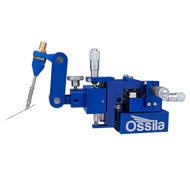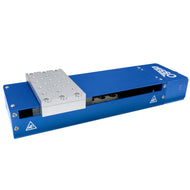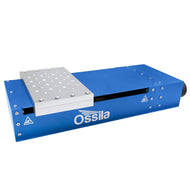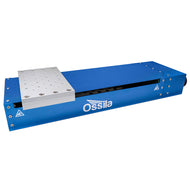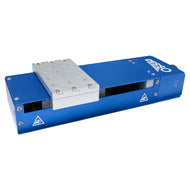Motion Control
Designed for high-performance positioning tasks, our motion control equipment is designed to integrate seamlessly into your existing research workflows and laboratory setups. Whether you are building custom systems or enhancing established platforms, our products deliver the accuracy and adaptability required to keep your research moving forward.
From manual adjustments to motorized systems, our high-resolution micromanipulator and range of linear stages deliver the stability and responsiveness you need for demanding setups such as micropositioning, probe alignment, and optical component manipulation.
Micromanipulator
Linear Stages
Resources and Support
Micromanipulator
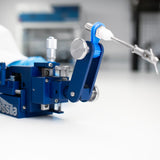 Connecting the Micromanipulator to the Source Measure Unit
Connecting the Micromanipulator to the Source Measure Unit
Learn how to use your micromanipulator with the Ossila Source Measure Unit. Plus, pick up some general tips and tricks for getting the most out of sensitive electrical probing measurements.
Read more... Micromanipulator Drift and Other Common Errors
Micromanipulator Drift and Other Common Errors
A micromanipulator can be easily and precisely controlled to allow precision placement of electrodes or probes. However, their performance can suffer from various mechanical issues, including drift, backlash, side play, and sticking.
Read more... Demonstration: Differential Interface
Demonstration: Differential Interface
The differential interface simplifies JFET characterization, offering ease of use, accuracy, and versatility. Learn how to implement this in your research.
Read more...Linear Stage
 How to Attach Your Linear Stage to a Breadboard
How to Attach Your Linear Stage to a Breadboard
Learn how to attach your linear stage to a breadboard for improved stability.
Read more... How to Assemble an XYZ Linear Stage System
How to Assemble an XYZ Linear Stage System
Learn how to stack and secure your linear stages to achive multi-axis motion.
Read more...Linear stages are used to achieve precise and controlled linear motion. They are integral to scientific research, the technology sector, industrial manufacturing, medicine, and more.
Read more... Do You Need a Linear Stage?
Do You Need a Linear Stage?
Whether you are involved in microscopy, spectroscopy, or metrology, a linear stage can be an invaluable tool. The decision to invest in a linear stage depends on the specific requirements of your application.
Read more... How to Choose a Linear Stage
How to Choose a Linear Stage
Based on your research needs, there are key factors to consider when selecting a linear stage.
Read more...